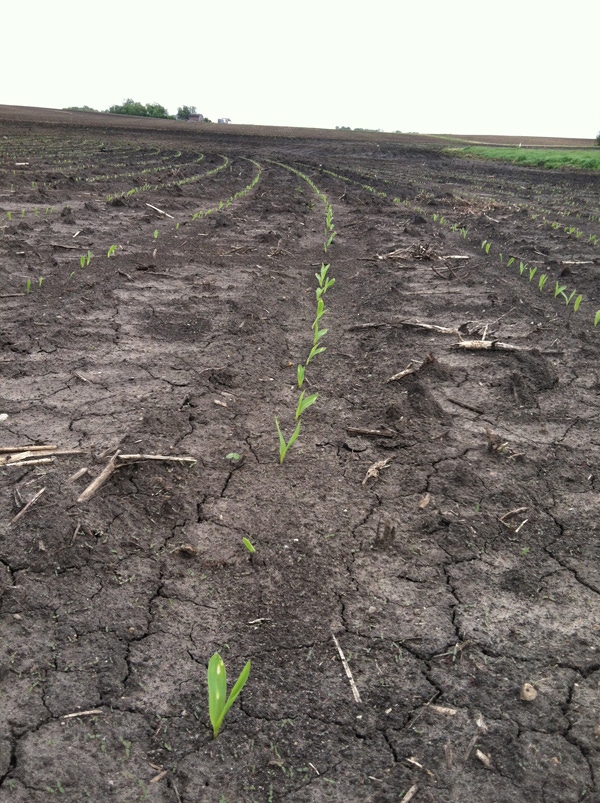December 25, 2012

Water, either too much or too little, may be the single most important factor in determining crop yields when other production factors such as genetics, seeding rate, planting date, fertility, weed, insect and disease control, etc. are held constant. For example, 200-bu. corn will need about 22 in. of plant available water.
Plant available water is that portion of the soil water that can be taken up by plants and is generally about 50% of the water holding capacity of a soil. From 19 to 23 in. of rain can be expected on average during the growing season (April-September) for most of Ohio. However, as we all know, the rainfall distribution may result in either wet or dry soil conditions and not all of the rain that does fall during the growing season enters into the soil. Given the fact that tile drainage is essential to remove excess water, what cultural practices can a producer implement to increase plant available water? Research conducted at OARDC provides insight into management to increase plant available water.
Table 1. Effect of Tillage and Soil Cover on Water Infiltration on Dry Soil (Wooster Silt Loam) Under Simulated Rainfall
Tillage System | Water Infiltration Rate after 1 Hour (in/hour) | Total Infiltration after 1 Hour (inches) |
Plowed, disked, cultivated, bare surface |
.26 |
.71 |
No-tillage, bare surface | .11 | .48 |
No-tillage, 40% cover | .46 | .92 |
No-tillage, 80% cover | 1.04 | 1.73 |
Source: Ohio Agronomy Guide: 12thEdition
Various tillage systems may increase water infiltration by breaking up compacted soil layers (compacted clay soils have very low water infiltration rates), aid in the creation of a seed bed and improve weed, insect and disease control. However, tillage may also have negative impacts on water infiltration through the breaking of soil aggregates and associated reduction in large pores that may hold water. This is reflected in the data of Table 1. Retaining a level of plant residues was beneficial in this study to increasing water infiltration. There are various tillage systems available that may leave crop residue that will aid in increasing water infiltration and in refilling the soil water bank. Cover crops, if managed appropriately, may also aid in water infiltration.
On Ohio soils with low organic matter where soil crusting is prone to occur, stand establishment and water infiltration may both be affected. These soils may benefit (if not deeply compacted) from shallow tillage systems that leave significant residue on the soil surface.
In conclusion, plant available water will be a function of:
Water infiltration
Soil structure
Soil organic matter
Soil type
Plant rooting depth
Through management, a producer can influence four out of the five factors that may increase plant available water and perhaps result in higher yields.
You May Also Like




